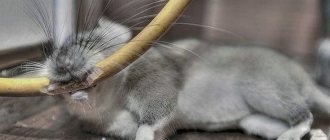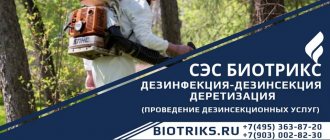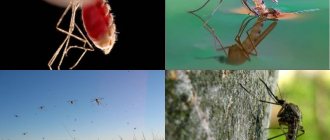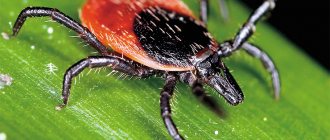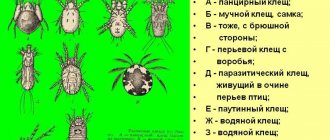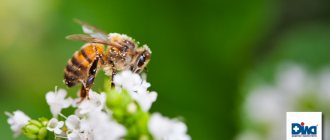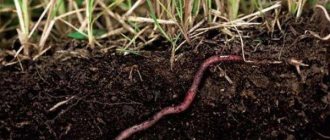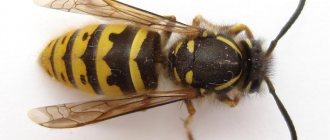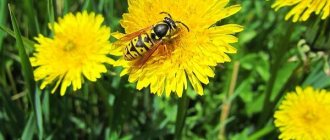The benefits and harms of a wasp are related to its food preferences and lifestyle. Unlike bees, humans do not like insects because of their aggressive nature, painful bites, and wrecking in their summer cottage. But the role of wasps in nature is extremely important. The wasp family is not limited to the striped yellow and black individuals that are well known to rural and urban residents. There is a huge variety, differing in lifestyle, behavior, and strength of poison.
The role of wasps in nature
There are about 1,000 species of wasps in the world. All this diversity can be divided into 2 main groups:
- single;
- public.
As the name implies, solitary insects exist on their own, while social insects unite into large families, which number up to 2-3 thousand individuals.
Public
No matter what category wasps belong to, they are an important part of the ecosystem. So, what benefits do wasps bring in nature:
- are considered one of the best natural orderlies, as they feed on carrion, accelerating its decomposition;
- participate in plant pollination;
- are predators that hunt many insects, regulating their numbers.
Of course, wasps do not purposefully hunt only pests, so they often destroy beneficial insects as well.
Do wasps pollinate plants?
One of the factors that determines the benefit of wasps in nature is that insects pollinate plants. The body of a wasp is not covered with villi, like a bee or a fly, so it does not carry as much pollen. In addition, these insects do not specifically engage in pollination. However, when wasps land on flowers to snack on nectar, they can become dirty with pollen, and when they fly to another plant, they unwittingly pollinate it.
Destruction of small insects
Regulating the number of insects that destroy agricultural crops and wild plants is what wasps are needed for in nature. The main diet of adults consists of fruit juices and flower nectar. But larvae need protein for growth and development. To provide the younger generation with enough nutrients, wasps hunt insects and arachnids, including:
- flies;
- mosquitoes;
- aphid;
- beetles;
- bedbugs;
- spiders;
- caterpillars, etc.
The wasps inject poison into the victim, and then bring the chewed flies and caterpillars to the larvae.
The benefit of wasps for humans is that they destroy many pests that cause serious damage to gardens and vegetable gardens, for example, cutworms, chafer larvae, thrips, and leaf beetles. Also, the benefit of wasps is a significant reduction in the population of flies that carry dirt and cause dangerous diseases.
Consequences of disappearance
Each insect has its own function in nature. Its disappearance will certainly lead to an imbalance. Being predators, wasps regulate the number of other insects, successfully destroying them. This way the natural balance is maintained.
Indirectly, they are protectors of insects with a color similar to aspen. The striped colors of harmless beetles and butterflies allow them to avoid encounters with predators that avoid those who look like wasps with a stern disposition.
Why don't people like wasps?
People's negative attitude towards wasps has developed over the centuries. It is not so easy to notice the benefits of these insects, but it is impossible not to pay attention to a painful bite or spoiled berries on the plot.
Spoiled Harvest
Adult wasps feed on nectar of flowers, juice of ripe fruits and berries. Insects prefer sweet fruits. Their priority is grapes, apricots, peaches, pears, plums, and raspberries.
With strong mandibles, the insect easily bites through the thin skin of the fruit and drinks the juice. Not only does it spoil the presentation of fruits and berries. Due to the damaged skin, the fruits begin to rot, and the unprotected sweet pulp attracts fruit flies and ants, which finish what the wasps started. As a result, the amount of crop available for harvesting and further use is significantly reduced.
Bites
Despite the fact that wasps are considered quite aggressive insects, they rarely attack people first. But if the insect feels threatened, for example, a person approaches it, waving his arms, it attacks.
Bite
A wasp sting is very painful. And the point is not only that the insect pierces the skin with a sharp ovipositor without any anesthesia. At the moment of the bite, poison produced by a special gland enters the wound. The chemical composition of the toxin varies depending on the type of wasp, but not a single bite goes unnoticed for a person.
Wasps and bees
Sweet-toothed wasps are attracted to the aroma of honey, so they are frequent but unwanted guests in apiaries. Insects enter the hives and destroy them by eating the reserves. The bees try to defend themselves, and the strong family manages to drive away the invaders. But a weak family may not be able to cope; a large number of honey plants die in the battle. The wasps feed the larvae with the bodies of dead bees.
“Domestic” parasitic insects
Few people find it pleasant to live “neighborhood” with parasites. Owners often have to deal with cockroaches, bedbugs, fleas, and house ants.
Red cockroaches cause big problems for humans. Prussians are not easy to get rid of as they are very prolific. The danger of these insects lies in the fact that cockroaches are capable of carrying pathogens of dangerous diseases. Compliance with basic sanitary standards in the apartment will help, along with the necessary treatment, to get rid of these unpleasant “neighbors”.
The food for bed bugs is human blood, so they appear at night and find the “victim” from a long distance by smell. During the day, bedbugs hide in cracks, behind wallpaper, ceilings and curtains
In addition to the troubles from bites, bedbugs are dangerous for humans as carriers of infection, so it is important for them to declare “war” immediately, perhaps even throwing away furniture or inviting specialists
Fleas usually come into the home from pets. They are dangerous to humans as carriers of viruses and microbes. Disinfecting pet rugs and regularly keeping them clean will eliminate the presence of these insects.
Many other representatives of insects can also live in a person’s home, including: house ants, moths, woodlice, and various bugs. All of them also cause trouble for people, pets and plants.
Wasp and man
Given the aggressive nature and painful stings of wasps, many people are wary of them. However, there is no denying the fact that wasps can be beneficial. Research is regularly conducted to find out what else wasps can do for people.
What attracts wasps to humans?
There are several factors that attract wasps to summer cottages or even to a person’s home. These include:
- aroma of ripe fruits;
- the smell of jam, compotes, sweets;
- smell of food waste.
Wasps do not like some smells, but do not scare them away, but provoke an attack. These smells are produced by:
- sickly sweet perfume;
- sweat;
- some deodorants.
Insect aggression can be caused by black, bright colors, and long flowing hair. But the smell of its own poison is extremely attractive to predators. So, if a person is bitten by a wasp, its relatives may be drawn to him.
Danger to humans
The main and rather serious danger to humans is the substance that the insect injects into the blood at the time of the bite. After it, the following symptoms may be observed:
- pain, burning, itching in the affected area;
- skin redness;
- edema;
- cardiopalmus.
The poison is a strong allergen, so a reaction develops even in people who are not prone to allergies. For allergy sufferers, the situation can be much more serious. In severe cases, the bitten person exhibits:
- temperature increase;
- nausea, vomiting;
- weakness, dizziness;
- convulsions;
- fainting;
- Quincke's edema.
Edema
Sometimes a person develops anaphylactic shock after being bitten.
Application in medicine
Modern research proves that the venom of some wasp species is a unique substance that interacts with cancer cells, destroying them. Perhaps over time, scientists will be able to create a medicine based on this substance that can be used to treat cancer.
Traditional healers claim that wasp nests are beneficial. They are crushed and an alcohol infusion is prepared based on the resulting powder. It helps in the treatment of pathologies of joints and bones. A decoction of the powder normalizes the functioning of the gastrointestinal tract. Baths containing crushed wasp nests are also beneficial. They invigorate and improve muscle tone.
Important purpose
Social wasps are predators that control the numbers of potential insect pests such as aphids and many caterpillars.
It is estimated that social bees in the UK alone kill 14 million kg of insects per summer.
Wasps are also valuable pollinators, carrying pollen by visiting flowers to drink nectar.
A new study will take advantage of wasps' love of sweet liquids to learn more about these amazing and underappreciated insects. Scientists ask people to make simple traps from a drinking bottle and a few drops of beer.
Researchers from University College London and the University of Gloucestershire want to collect and study the contents of these beer traps. The project aims to find out what species of wasps live in the UK in order to conserve them.
Useful tips
It is impossible to guarantee the protection of a personal plot from the appearance of wasps, and given the benefits that these insects bring, it is not reasonable. But it’s worth thinking about protecting ripening sweet fruits from insects in advance. To do this, pears, peaches, and bunches of grapes are covered with netting or other material. The process is labor-intensive and time-consuming, but the harvest will remain intact and you will not have to use toxic insecticides.
If there are too many wasps on the site and you still decide to get rid of them, you should not immediately use chemicals. It is more advisable to try using safer means, for example, using traps (you can make your own).
It has been noticed that wasps do not take root where there are already other people’s nests. And since insects are not very picky, a structure vaguely similar to it can be used as a false nest.
Family Features
Appearance
The length of these insects, depending on the species, is from 10 to 100 mm. Wingspan up to 60 mm. Most Scolia species are found in tropical and subtropical regions. A small part is found in the north. There are about 25 species in the CIS countries.
The color of most species is black and yellow. The female is a black insect with yellow plaques on the abdomen. Her wings are the color of onion skins with a purple sheen. The female is more massive and awkward than the male. He looks weaker compared to her.
Scolia feed their offspring with the larvae of rhinoceros beetles, beetles, and bronze beetles.
Scolia hunt prey that has close nerve ganglia. Having found her prey, the female begins to attack her - she always stings her in the abdominal nerve center, which controls movement. Thus, Scolia does not kill the larva, but paralyzes it. This allows food to remain fresh for a long time.
Reproduction
It turns out that the wasp uses its sting as a thin surgical instrument. With this tool she almost always hits the target. After immobilizing the victim, Scolia lays an egg on its belly. The hatched larva gradually begins to eat the beetle larva. The eating process also has its own characteristics - less important organs are eaten first, and only at the end the circulatory and nervous systems . If this process of food intake is disrupted, then after a very short time it will begin to decompose. But such mistakes do not occur in nature. Scolia hunts underground, so the hunting process is hidden from the observer.
The average duration of a larva's consumption of prey is about 12 days. Ultimately, all that remains of the beetle is the skin. The Scolia larva begins to weave a cocoon. To do this, the larvae are placed in a hanging hammock, which serves as a fence that allows the threads to be distributed correctly. After a day, the process of cocoon formation is completed. It has the shape of an ellipse. In females its average length is 26 mm, in males it is 17 mm. The salivary glands produce silk, which consists of proteins and carbohydrates. The larva spends the winter in this state, and in the spring adult insects emerge from it and go outside to search for food and reproduce. Adult wasps feed on flower nectar.
The mating period in scolias, like other insects, is limited. After fertilization, the female digs a hole near the habitat of her future prey. These burrows are different from the burrows made by other Hymenoptera. They have no entrances, exits, or corridors. To penetrate the ground, the female chooses any place that has not yet been dug up. The exit location doesn’t matter to her either. When exiting, the mink crumbles, blocking the exit hole. Around the end of summer, the female is busy laying eggs and preparing food for the larvae.
Benefit or harm
A person sees and evaluates only a small part of what wasps can do. In most cases, attention is directed to the negative qualities of insects. Often a person fights wasps without thinking about the consequences, just because they spoil grapes, eat berries, and can potentially sting painfully.
Harm to humans
In severe cases, the reaction develops instantly; swelling of the larynx can occur in just 5 minutes. In the absence of qualified help, a person dies. The situation is extremely rare, but it does happen. Severe allergies can occur even in those people who have previously been repeatedly exposed to insect bites and have always tolerated them easily.
In various sources there is a statement that wasps attack only in case of danger to their own life, but they can regard any human movement as aggression and rush to attack. A small insect can simply not be noticed, stepped on or pressed. A bite will definitely follow. The situation is extremely dangerous when a person approaches a wasp nest; a massive attack of insects causes severe allergies.
To protect yourself from troubles in the warm season, you need to avoid making sudden movements when you see a wasp, behave carefully in nature, and always carry an antihistamine with you.
Wasps in a summer cottage
Adults feed on nectar, bee honey, juices of ripe fruits, and some vegetables. And also lemonade, kvass, beer. Protein food is required to feed the larvae. Wasps can often be found near meat and fish. In the wild they hunt spiders, small and large insects. This is where the beneficial and harmful qualities of insects appear.
At a summer cottage, the nest and a large number of striped individuals are disposed of to avoid being bitten and damaging the crop. Insects are especially dangerous for grapes. What wasps do with berries: they simply pierce them and suck out the juices. But they have the peculiarity of not eating away one, but damaging different ones. At the puncture site, the berry begins to deteriorate and rot. Several dozen wasps in a vineyard can cause significant damage to the crop. To combat insects on grapes, people use special bags, traps, and insecticides.
It is dangerous for a wasp family to settle in a country house where there is an apiary. Predators are not averse to getting their fill of honey, and the bees are carried away to their larvae for food. A massive attack can destroy a bee hive in half an hour. To catch predators, beekeepers place traps and destroy nests mechanically - pour boiling water over them and burn them.
However, in a summer cottage, wasps bring benefits, even more than harm. They destroy a huge number of insects, which humans call agricultural pests.
The venom of the Brazilian wasp has become a real medical discovery because it can kill cancer cells. In the future, it is planned to produce a unique medicine that will help defeat oncology of the genital organs and bladder.
What to do with bites
Wasps are the most poisonous arthropods in our environment. Their stings are long, saber-shaped and without a harpoon notch, which allows them to sting repeatedly without losing the poisonous organ, from which, after the injection, the poison enters the wound.
Why are bites dangerous?
Single wasp stings are dangerous only if you are particularly allergic to the poison. This insect is mortally dangerous for one person out of 100 thousand allergy sufferers. But a dozen hornet stings and several dozen wasp stings can lead to very sad consequences. A bite to the esophagus area is especially dangerous - within 5 minutes it can cause suffocation.
There are several reasons why and when wasps bite (sting) people:
- the nest is under threat or destroyed (they can attack an intruder in a swarm);
- they are irritated by sudden movements of people and animals;
- they don’t like the smell of, for example, perfume, cosmetics;
- they are irritated by dark or bright shades.
